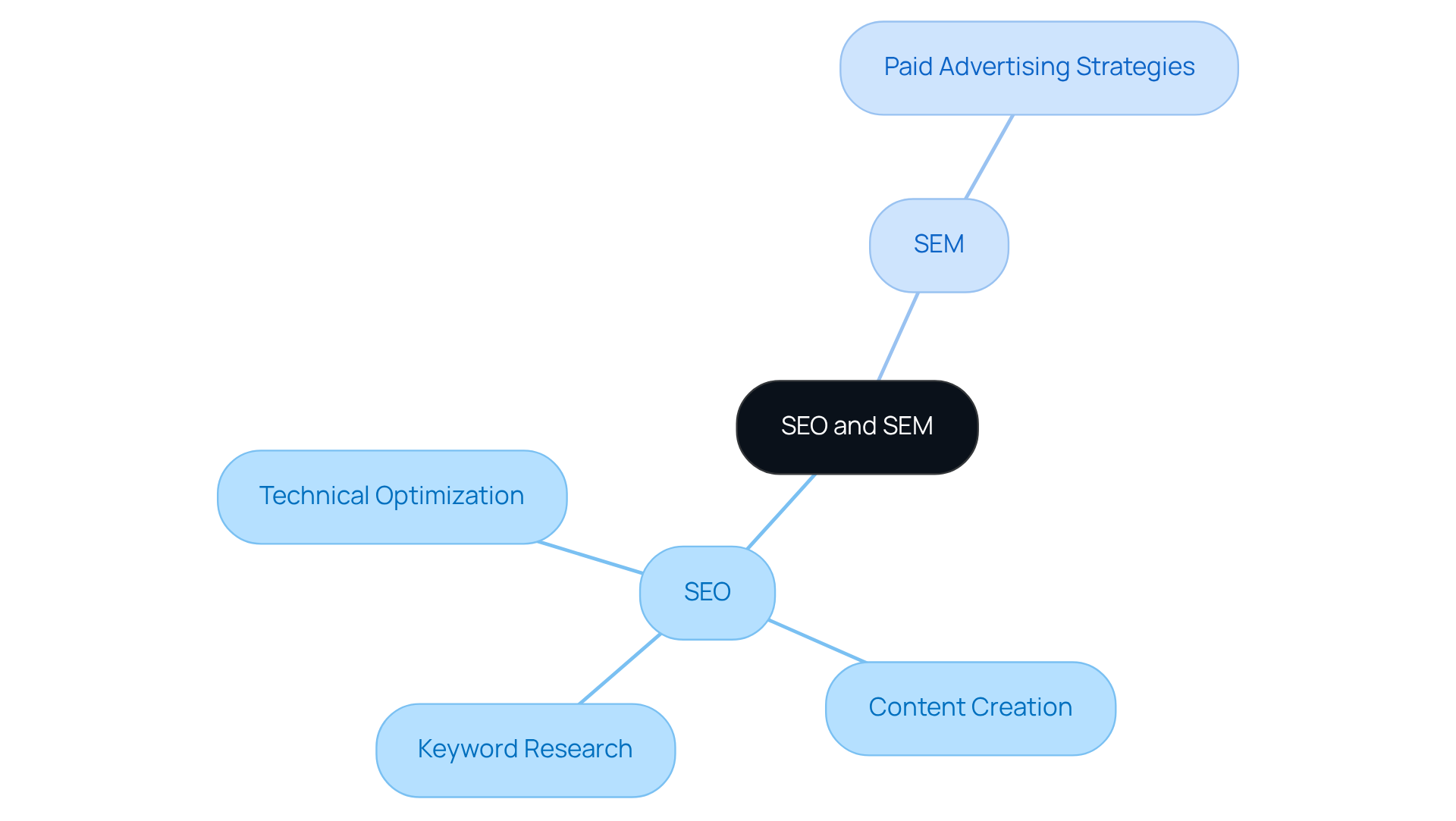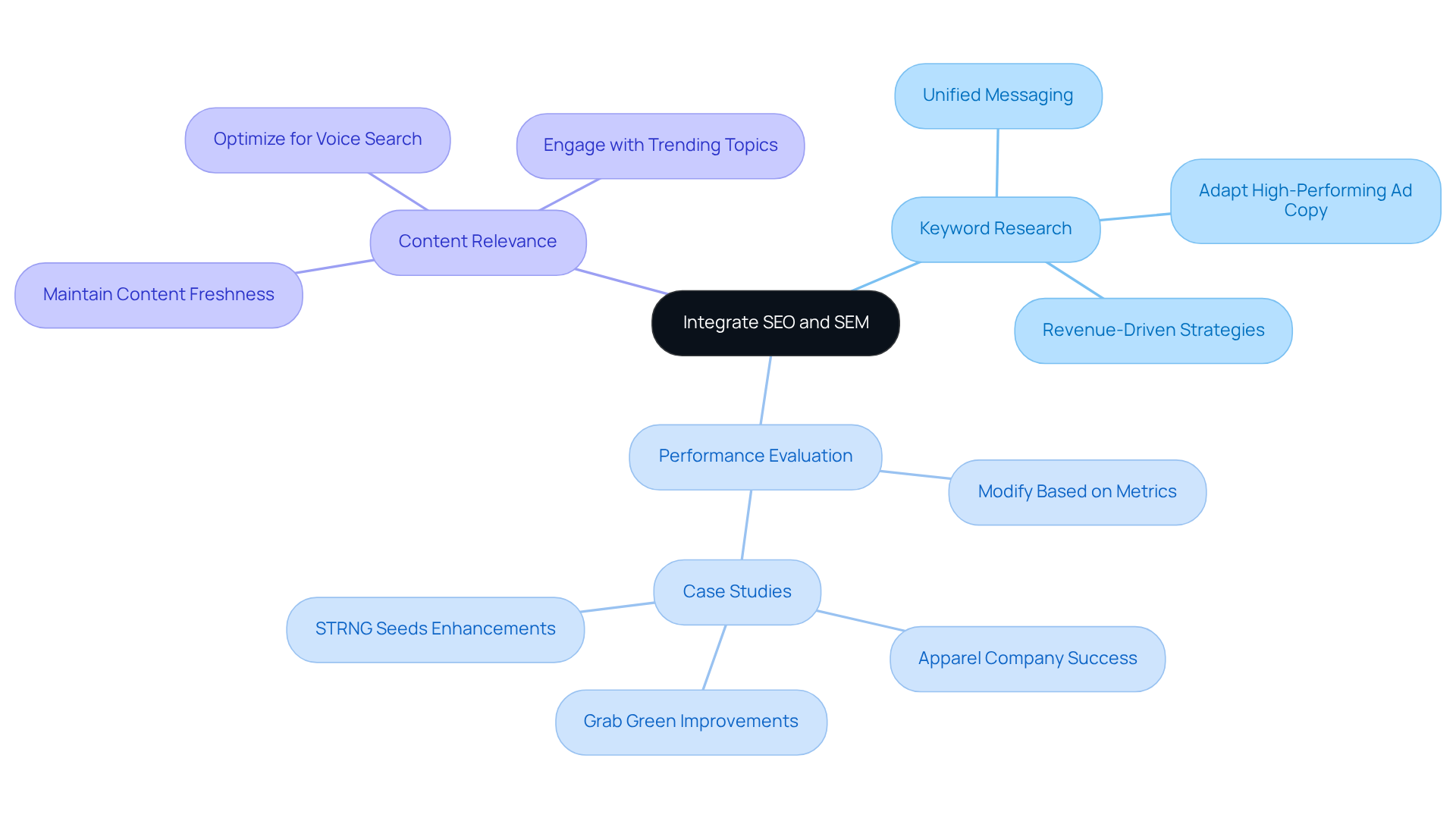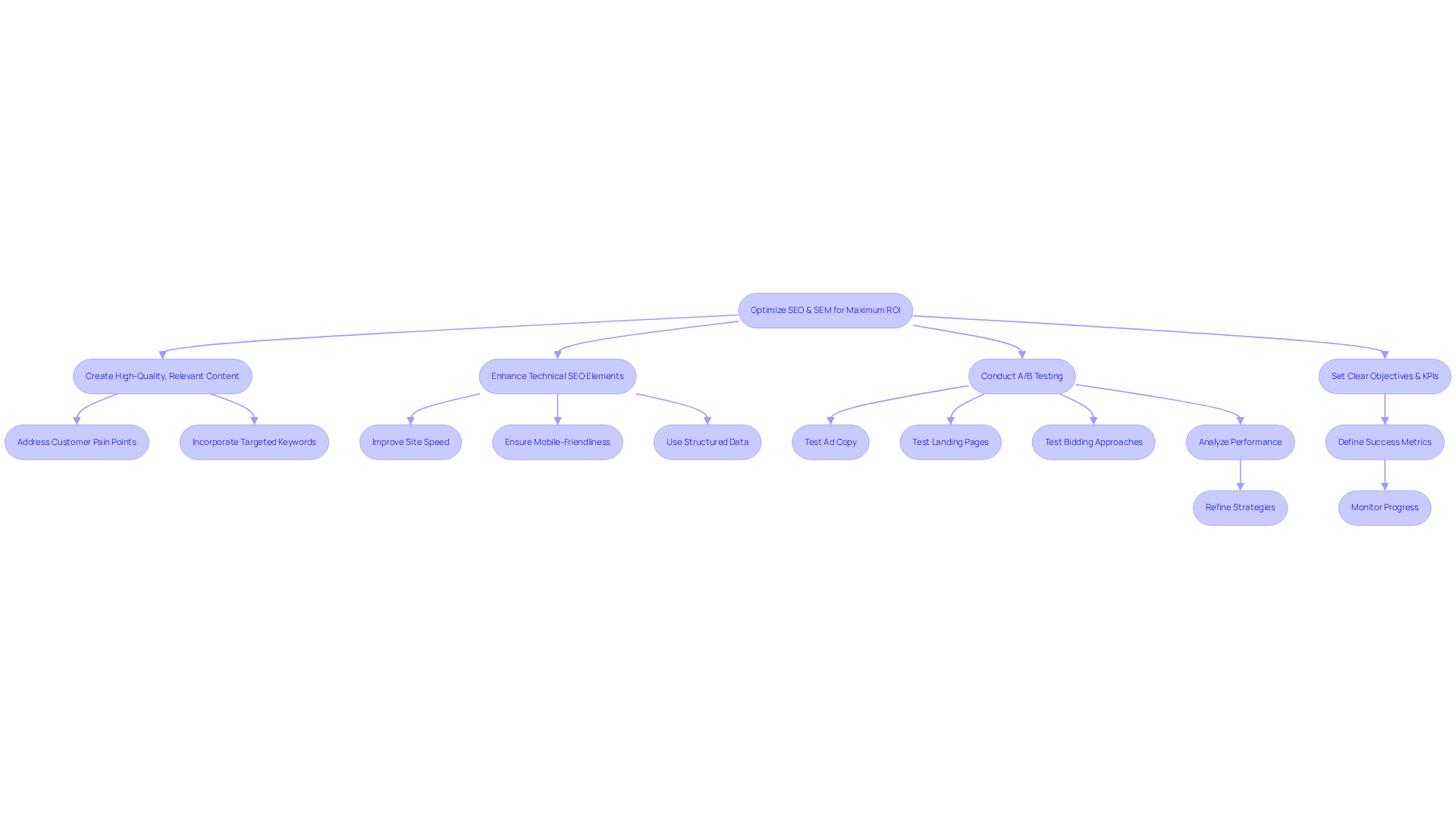
Overview
This article delves into the mastery of SEO and SEM strategies, aimed at amplifying Direct-to-Consumer (DTC) brand visibility and optimizing return on investment (ROI). It asserts the critical need for integrating both strategies through meticulous keyword research, thorough performance metrics analysis, and relentless content and advertising optimization.
These practices are not merely recommendations; they are essential tactics that collectively drive traffic and significantly enhance conversion rates for DTC brands.
Introduction
In today’s digital marketplace, Direct-to-Consumer (DTC) brands confront a formidable challenge: distinguishing themselves in a landscape marked by intense competition. Mastering Search Engine Optimization (SEO) and Search Engine Marketing (SEM) is not merely advantageous; it is imperative for enhancing brand visibility and achieving substantial return on investment (ROI). This article explores effective strategies for integrating these two powerful tools, providing insights on how brands can leverage:
- Keyword research
- Performance metrics
- Best practices
to optimize their online presence. However, with the rapid evolution of consumer behavior and search algorithms, how can DTC companies ensure that their strategies remain both relevant and effective?
Define SEO and SEM: Core Concepts for DTC Brands
SEO, or Search Engine Optimization, is the strategic process of enhancing a website's visibility in organic search results. This involves a variety of techniques, including:
- Keyword research
- Content creation
- Technical optimization
All aimed at improving user experience and site performance. Conversely, SEM, or Search Engine Marketing, encompasses paid advertising strategies, such as pay-per-click (PPC) campaigns, designed to boost visibility in search engine results pages (SERPs) through paid placements. For Direct-to-Consumer (DTC) companies, utilizing SEO and SEM strategies is crucial for reaching a wider audience and driving traffic effectively. Understanding these fundamental concepts empowers companies to allocate resources wisely and elevate their marketing strategies.

Integrate SEO and SEM: Strategies for Enhanced Visibility
To effectively integrate SEO SEM strategies, DTC companies must prioritize comprehensive keyword research that identifies terms relevant to both their organic and paid efforts. This approach guarantees that the same keywords are targeted across both channels, fostering a unified message that resonates with consumers. Insights gleaned from SEM campaigns significantly inform SEO efforts; for instance, high-performing ad copy can be adapted for organic content, thereby enhancing its effectiveness.
Consistent evaluation of performance metrics from both channels is vital, as it enables companies to make informed modifications that enhance visibility and increase conversions. For example, a $30M apparel company that partnered with Parah Group experienced a 35% increase in conversion rates after optimizing their homepage and product pricing. Similarly, Grab Green, a $15M revenue cleaning product company, improved its AOVs and reduced CACs through tactical adjustments, while STRNG Seeds enhanced their AOVs and conversion rates by executing focused plans.
If a company discovers that specific keywords perform well in paid advertisements but struggle organically, it can launch a targeted SEO plan to enhance those terms, ultimately boosting overall search performance. Furthermore, with Google's top three organic search results capturing 68.7% of clicks, implementing effective SEO SEM strategies is crucial for generating traffic. As Andrew Holland states, "Keyword research is a cornerstone of SEO success, but many SEOs do it incorrectly."
Moreover, as zero-click searches continue to rise, DTC companies must adjust their strategies to ensure visibility. Finally, maintaining content relevance is essential for enhancing ranking potential on SERPs, in accordance with best practices for effective SEO SEM strategies.

Implement Best Practices: Optimize SEO and SEM for Maximum ROI
To enhance their SEO SEM strategies, DTC companies must prioritize the creation of high-quality, relevant content that effectively addresses customer pain points while seamlessly incorporating targeted keywords. This foundational step not only captures attention but also builds interest among potential customers. Key technical SEO elements, including site speed, mobile-friendliness, and structured data, are essential for improving user experience and boosting search rankings. These aspects are critical in generating desire for a seamless online experience.
For SEM, companies should engage in ongoing testing of ad copy, landing pages, and bidding approaches to identify what resonates best with their audience. A/B testing is particularly valuable, providing insights into which elements yield higher conversion rates. By actively analyzing these components, companies can refine their strategies and prompt action toward better performance.
Additionally, setting clear objectives and KPIs for assessing the success of SEO SEM strategies and improving approaches as necessary is essential. This clarity not only reinforces accountability but also drives continuous improvement. By concentrating on these best practices, DTC companies can significantly enhance their ROI and visibility in an increasingly competitive digital landscape.

Measure Performance: Analyze and Adjust SEO and SEM Strategies
To effectively measure the performance of their SEO SEM strategies, DTC companies must leverage tools like Google Analytics and SEMrush to monitor essential metrics, including organic traffic, conversion rates, and cost-per-click (CPC). Regular analysis of these metrics enables companies to identify trends and pinpoint areas for enhancement.
For instance, if a specific keyword generates substantial traffic but results in low conversions, this discrepancy may signal a misalignment between ad messaging and landing page content. Collaborating with a specialist CRO agency such as Parah Group can create a notable impact. Their emphasis on profitability and sustainable growth ensures that companies not only draw traffic but also convert visitors into customers efficiently.
Parah Group's strategies are designed to lower expenses while boosting margins, offering a distinct value proposition for DTC companies. Furthermore, conducting periodic audits of SEO and SEM strategies is crucial for adapting to shifts in consumer behavior and search engine algorithms. This proactive approach aids in sustaining a competitive advantage and enhances return on investment (ROI).
By focusing on data-driven insights and integrating CRO strategies, brands can refine their marketing approaches and drive more effective outcomes. Additionally, incorporating competitor analysis using tools like Screaming Frog can provide further insights into market positioning and performance.
Once you partner with Parah Group, you will experience a tailored onboarding process along with ongoing communication that aligns with your specific needs.

Conclusion
Mastering SEO and SEM strategies is paramount for Direct-to-Consumer (DTC) brands seeking to amplify their visibility and return on investment. By integrating these two potent approaches, companies can forge a cohesive marketing strategy that not only attracts traffic but also transforms visitors into loyal customers. The effective utilization of both organic and paid search techniques equips DTC brands to excel in a fiercely competitive digital landscape.
This article underscores the significance of:
- Thorough keyword research
- The development of high-quality content
- Continuous analysis of performance metrics
Essential insights, such as:
- The imperative of aligning ad messaging with landing page content
- The importance of ongoing testing
are vital for optimizing both SEO and SEM initiatives. Successful case studies illustrate how strategic adjustments can yield substantial enhancements in conversion rates and overall ROI.
As the digital marketplace evolves, DTC brands must remain agile and proactive in their marketing strategies. Embracing best practices in SEO and SEM not only elevates brand visibility but also cultivates sustainable growth. Companies are urged to harness data-driven insights and innovative tools to refine their approaches, ensuring they stay competitive and effectively address the needs of their audience. Implementing these strategies will undoubtedly fortify their presence in search results and significantly impact business success.
Frequently Asked Questions
What is SEO?
SEO, or Search Engine Optimization, is the strategic process of enhancing a website's visibility in organic search results through techniques such as keyword research, content creation, and technical optimization.
What are the main techniques involved in SEO?
The main techniques involved in SEO include keyword research, content creation, and technical optimization, all aimed at improving user experience and site performance.
What is SEM?
SEM, or Search Engine Marketing, encompasses paid advertising strategies, such as pay-per-click (PPC) campaigns, designed to boost visibility in search engine results pages (SERPs) through paid placements.
Why are SEO and SEM important for Direct-to-Consumer (DTC) companies?
SEO and SEM are crucial for DTC companies as they help reach a wider audience and drive traffic effectively to their websites.
How do SEO and SEM empower companies?
Understanding SEO and SEM empowers companies to allocate resources wisely and elevate their marketing strategies.
FAQs











